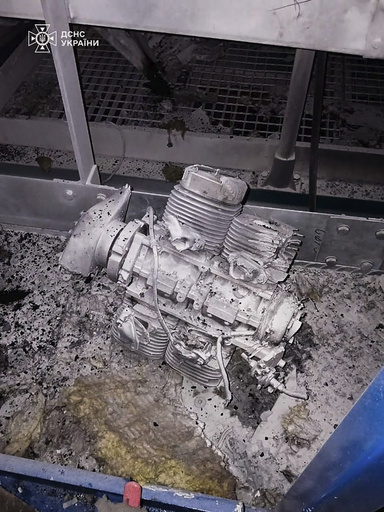
CHERNOBYL NUCLEAR POWER STATION, Ukraine — Early Friday morning, a drone equipped with a high-explosive warhead struck the outer protective structure of Ukraine’s Chernobyl nuclear facility, creating a significant breach and igniting a brief fire. The attack has been attributed to Russia by Kyiv, although the Kremlin has firmly denied any involvement.
According to the U.N. International Atomic Energy Agency (IAEA), radiation levels at the decommissioned plant, the site of the most catastrophic nuclear incident in history, have remained stable, indicating that the internal containment layer of the facility was not compromised. While the IAEA did not allocate blame, it reported that personnel stationed at the site heard the explosion and confirmed the drone impact.
Concerns about military engagements near nuclear facilities have heightened during the ongoing conflict in the region. The haunting memory of the 1986 Chernobyl tragedy, which resulted in at least 30 deaths and widespread radioactive contamination, continues to evoke dread. Notably, the Zaporizhzhia nuclear plant, the largest in Europe, has also been subjected to drone strikes during the conflict, though these incidents have not led to substantial harm.
The timing of the Chernobyl incident coincided with President Donald Trump’s recent announcement of a shift in U.S. policy regarding Ukraine, suggesting potential direct negotiations with Russian President Vladimir Putin to address the ongoing war. This move has raised concerns in Ukraine, potentially marginalizing President Volodymyr Zelenskyy and European leaders in future peace dialogues.
Ukrainian officials reported that the drone strike caused damage to the outer shell, designed to prevent radiation leaks and constructed in 2016 over an earlier concrete containment structure erected after the 1986 disaster. President Zelenskyy confirmed that the destructive drone strike led to a fire that has since been extinguished. The outer shell, a massive shield made from steel and concrete, weighs 40,000 tons and could accommodate the Notre Dame Cathedral.
The Ukrainian nuclear regulatory authority indicated that the drone’s impact also harmed equipment in a maintenance garage. Officials stated that there was “no immediate danger” to the facility, nor was there any risk of radioactive contamination. Oleksandr Kharchenko of the Kyiv-based Center for Research on Energy and Clean Air emphasized the fortitude of the protective structures despite the damage sustained in the attack.
In contrast, Kremlin spokesperson Dmitry Peskov asserted that Russia had not targeted nuclear infrastructure, labeling claims of such attacks as falsehoods. During a conference call with journalists, he dismissed the allegations, stating, “Our military doesn’t do that.” Additionally, Peskov accused Ukraine of conducting a “false flag” operation to discredit Russia and sabotage potential negotiation efforts between Trump and Putin.
Russian Foreign Ministry spokesperson Maria Zakharova condemned the drone strike as a “reckless” act by Kyiv, while also highlighting Russia’s commitment to international initiatives to fortify the struck structure.
During the Munich Security Conference, Ukraine announced plans to share comprehensive details regarding the Chernobyl incident with U.S. officials. Zelenskyy remarked that the attack represents a clear message from Putin to the conference attendees. The Ukrainian president indicated that discussions for ending the war should be contingent on security guarantees for Ukraine and expressed willingness to engage in dialogue with Putin only after an agreed plan is negotiated with Trump.
IAEA Director Rafael Grossi highlighted the ongoing military activity near Zaporizhzhia and its implications for nuclear security, maintaining that the agency remains on high alert. He assured that IAEA personnel reached the site quickly following the strike, confirming that no injuries were reported, and reiterated that radiation levels remained normal at both the interior and exterior of the facility.
Zelenskyy contended that the strike demonstrates Russia’s unwillingness to engage in meaningful negotiations, characterizing the threat as a global concern. He asserted that Russia’s actions undermine the safety of nuclear facilities worldwide and must be accounted for. “The only state in the world capable of attacking such facilities and disregarding the consequences is today’s Russia,” he stated emphatically.

